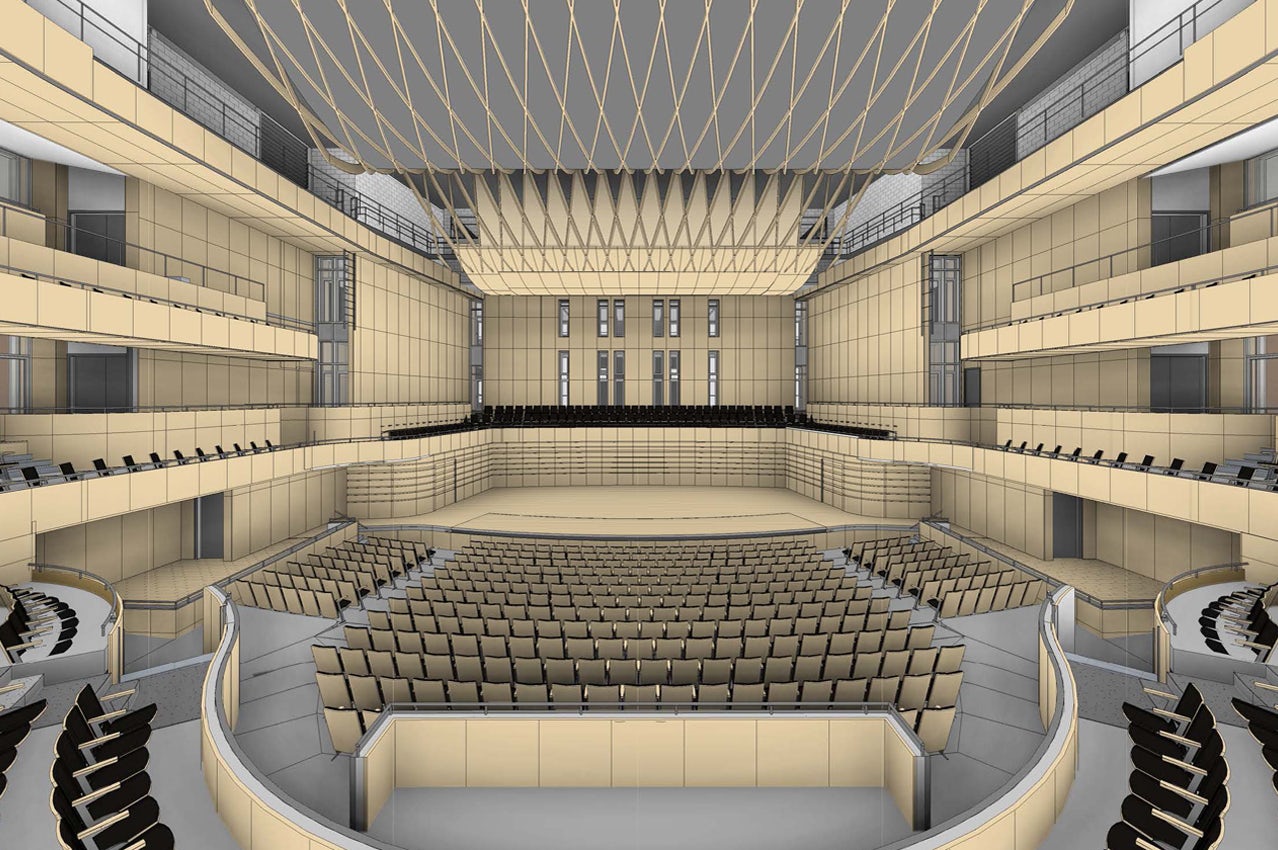In an interview with the American Society of Civil Engineers, VMDO’s Drew Fleming explains how the new Concert Hall at Liberty University supports a dynamic spectrum of musical pedagogy, from traditional orchestra performances to the amplified worship arts.
The new concert hall adjoins a new academic wing (home to Liberty’s School of Music) to form the Center for Music & the Worship Arts. The academic wing includes 50 practice rooms, 40 teaching studios, common spaces, a recital hall, and two rehearsal rooms.
Working with consultants from Creative Acoustics, of Westport, Connecticut, and Theater Consultants Collaborative, of Chapel Hill, North Carolina, VMDO formulated an innovative approach in which the audience enters the facility behind the stage area and walks around the space to enter the seating area.
Inside, gently flowing wooden ceiling panels and surfaces evoke musical instruments and traditional representations of the movement of sound. Hickory wood panels are tightly bonded to large concrete masonry wall units, grouted solid to provide sufficient acoustical mass to reflect low bass notes. Also providing acoustical mass are the thick concrete slabs of the ceiling and risers.
Read the full article on asce.org.

